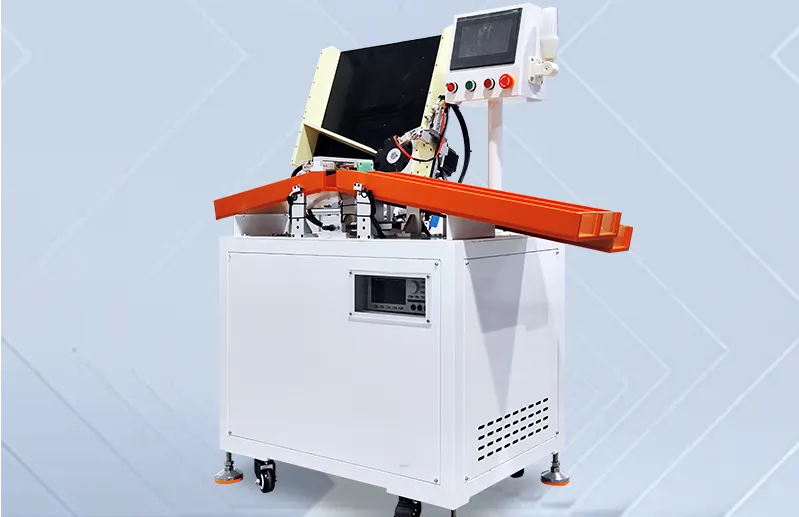In the battery manufacturing industry, a highly intelligent and essential machine called the OCV Sorting Workstation plays a crucial role in maintaining the quality of battery cells. Often referred to as the "super inspector" of the production line, this machine inspects and sorts batteries based on their performance, ensuring that only high-quality cells are used in the final products.

What is an OCV Sorting Workstation?
Imagine you have hundreds or even thousands of newly manufactured battery cells, but you don't know which ones have optimal voltage, internal resistance, and overall performance. This is where the OCV Sorting Workstation comes into play. Equipped with high-definition cameras ("eyes") and intelligent computer programs ("brain"), it carefully analyzes each battery’s characteristics, checking whether the voltage and internal resistance meet the required standards.
How Does the OCV Sorting Workstation Work?
Battery Inspection: The OCV Sorting Workstation begins by scanning the battery for identification tags or markings, ensuring each battery is correctly identified. It then measures the key indicators, such as the voltage and internal resistance of the cell, which are essential for assessing the battery’s health and functionality.
Grading and Scoring: Based on the measured results, the workstation assigns a grade to each battery. Similar to how teachers grade students, batteries are classified into categories such as "Excellent," "Good," "Pass," or "Fail." This helps in identifying high-performance batteries versus those that may not meet the required standards.
Sorting and Storing: After grading, the OCV Sorting Workstation sorts the batteries according to their performance level. This is similar to organizing books in a bag based on category. The batteries are placed together based on their classification, making it easier for manufacturers to access batteries with similar performance characteristics for different products or applications.
Why is the OCV Sorting Workstation So Important?
The OCV Sorting Workstation is essential for ensuring that only high-quality batteries are used in manufacturing processes. If a battery has unstable performance, it could impact the overall functionality and longevity of the product it powers. By using the OCV Sorting Workstation, manufacturers can identify and address underperforming cells early on, thus preventing quality issues and ensuring the final product's reliability.
Future Outlook: The Evolution of OCV Sorting Technology
As technology advances, OCV Sorting Workstations will continue to become smarter. Future versions may be able to more accurately assess a battery's performance, process a larger number of batteries at faster speeds, and even learn to identify more subtle variations in battery characteristics. This will further enhance the efficiency of battery production lines and improve the overall quality of the batteries being produced.
In the future, OCV Sorting Workstations could integrate AI and machine learning algorithms, allowing them to continuously improve their sorting accuracy and processing speed. This would help manufacturers achieve higher production rates while ensuring the consistent quality of the batteries produced, ultimately benefiting industries reliant on battery technology, such as electric vehicles, renewable energy storage, and consumer electronics.
Conclusion: A Key Player in Battery Manufacturing Efficiency
In summary, the OCV Sorting Workstation is an indispensable tool for ensuring that only the highest quality batteries reach the market. Its role in grading, sorting, and classifying battery cells based on performance helps manufacturers optimize their production process, reduce waste, and deliver products with greater reliability and longer lifespan.
As OCV Sorting Workstations become more advanced, they will continue to revolutionize the battery manufacturing industry by increasing efficiency, ensuring product quality, and driving innovation in battery technology.



